By Ian McDonald, Vicki Hilborn and Alex Barrie, OMAFRA
Listen to the audio version below or subscribe on iTunes, Google play or Spotify
Wheat harvest 2020 is right around the corner! The conditions are dry in those fields! Once the rush starts it will be “all hands on deck” But remember the slew of harvest/field fires that occurred in July 2016/17/18 under similar dry conditions. Harvest fires result in a financial, emotional and environmental burden to the farm and risks the lives of farm personal, local fire departments and the public and uses firefighting resources. Make sure you are prepared before harvest begins!
Figure 1. Ready for Wheat Harvest! Keep Harvest equipment well maintained and clean. (OMAFRA)
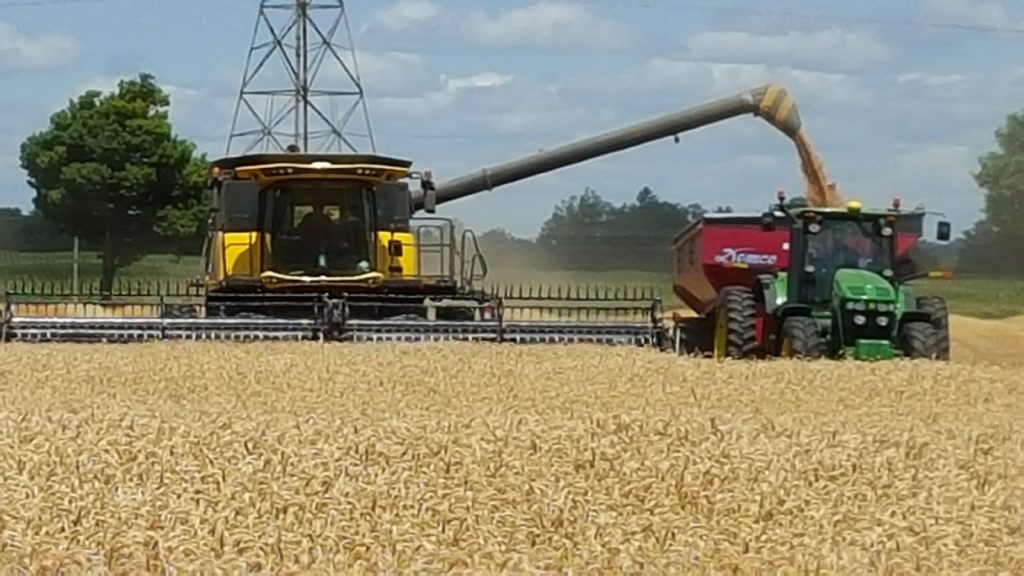
Field fires can happen in any crop and at any time but tend to be more prevalent in mid-summer during cereal harvest. For a field fire to start, combustible materials must be ignited under the right conditions. An ignition source could be a spark from a harvest machine or heat from a worn bearing. Combustible materials include the crop or residue that is accumulated within the machine, windrows of straw or stubble in the field. Harvest fires are most likely to occur and spread rapidly during dry and hot periods, but they can even occur in damp conditions.
Figure 2 a+b. Harvest fires can spread rapidly and threaten more than just the crop and harvest equipment. (2a Haldimand Fire, 2b OMAFRA)

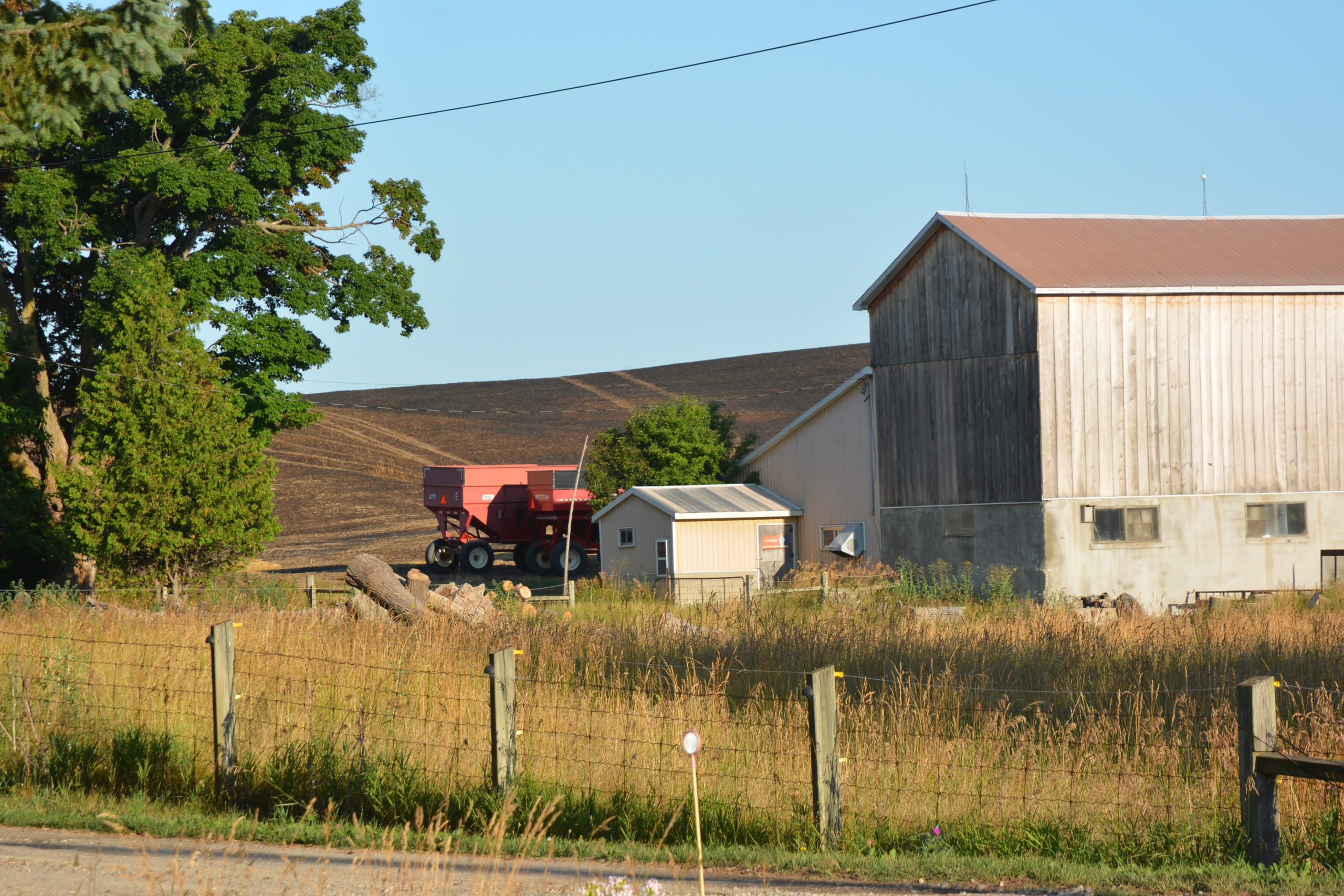
To reduce the likelihood and impact of a harvest fire, develop a plan which includes Avoidance, Preparation and Response components. This plan should be written down, shared with staff on an annual basis, revised when a new field or equipment is purchased/rented and posted somewhere easily accessible (such as the shop or equipment cab). You can even share and get feedback on the plan from your local fire department.
Elements of your plan could include:
1. Avoidance – prevent the field fire from occurring
- Have a plan! Creating a plan, review the plan, practice the procedures of the plan. Doing so makes you more aware of risks around you.
- Keeping equipment well maintained and working properly.
- Ensuring equipment is clean both internally and externally including the working areas of the equipment, the operator area and the external mirrors (i.e. to increase visibility).
- Avoiding parking equipment, including trucks, on stubble.
- Use caution when pulling equipment into the field with the pickup and remove the truck from the field quickly.
Figure 3. Wheat harvest is a dusty business. Keeping combines clean to reduce fire fuel and allow good visibility to spot fires quickly if they start is essential. (OMAFRA)
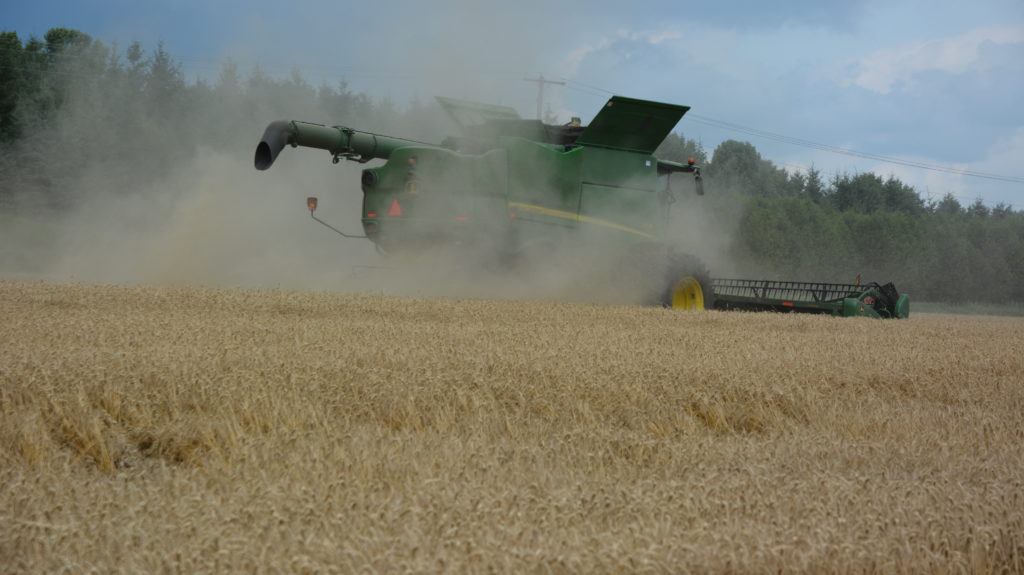
Figure 4. The hot underside of vehicles is a ready source of ignition for wheat field fires because of the short clearance between stubble and vehicle. (OMAFRA)

2. Preparation – in case a fire occurs
- Ensure that 911 address markers are in place and are legible/visible to assist fire response (Figure 5).
- Know the location of each field where you are harvesting including the 911 address and other directions should a 911 sign not be present at the field entrance for quick relay of the information to first responders.
- All field locations should be documented and everyone should know the 911 location of the current harvest location (including custom harvesters).
- Have the GPS location of field entrances recorded and organized on smartphones or train people how to use the “drop GPS pin” function on their smartphones (not all fire crews are equipped to receive GPS pins, but the practice is increasing). GPS pins may be sent direct to personal phones of responders if they have the phone number of the person at the scene, supply this phone number to the 911 operator.
- Identify multiple exit points from every field.
- Be aware of the seasonal conditions. Is it hot, dry and windy?
- Be vigilant and check frequently for fires that can start behind your equipment.
- Have a fire extinguisher available in all equipment. Ensure the fire extinguishers are properly charged and inspected regularly.
- Have a larger sprayer nurse tank filled with water, with the pump fully fueled and hitched to a tractor sitting in the field (Figure 6).
- A full liquid manure spreader can replace the water tank.
- Have a large tillage implement like a disc or cultivator (Figure 6.) hooked up and sitting in the field ready to deploy quickly in order to build a bare soil fire break ahead of a fire. (Figure 7).
- Ensure that all fields have “ready” access for fire trucks. If access is impeded, tell 911 when reporting the fire.
- Identify all nearby sources of water (ponds, hydrants, streams) that fire services can use to fill tankers, have these mapped and included with your “plan”.
- Prepare a binder to be placed in all equipment and office that includes field locations, marks field access points, identifies water sources, includes emergency numbers and response procedures.
- Share the “plan” with your team, including custom harvesters and ensure they know it.
Figure 5 a-d. Ensure 911 Signs are present and clearly visible. Be able to identify the field entrance emergency response should use relative to a 911 sign. Too many locations across rural Ontario have 911 sign issues like Figures 5 b,c,d).
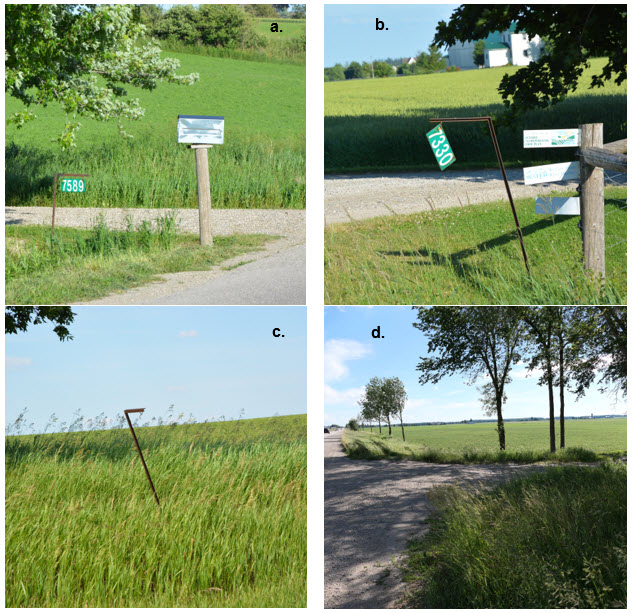
Figure 6. A water tank full of water and fuel and tested for operation and hooked to a tractor can respond to the start of a field or equipment fire quickly. (OMAFRA)

Figure 7. A piece of tillage equipment parked in the field can quickly be deployed to build a fire break in the crop or stubble to stop the fire. Only effective if it is in field and can be deployed quickly before the fire gets out of control. If deployment is too slow, wind and fire energy buildup and can easily “jump” a fire break. (OMAFRA)
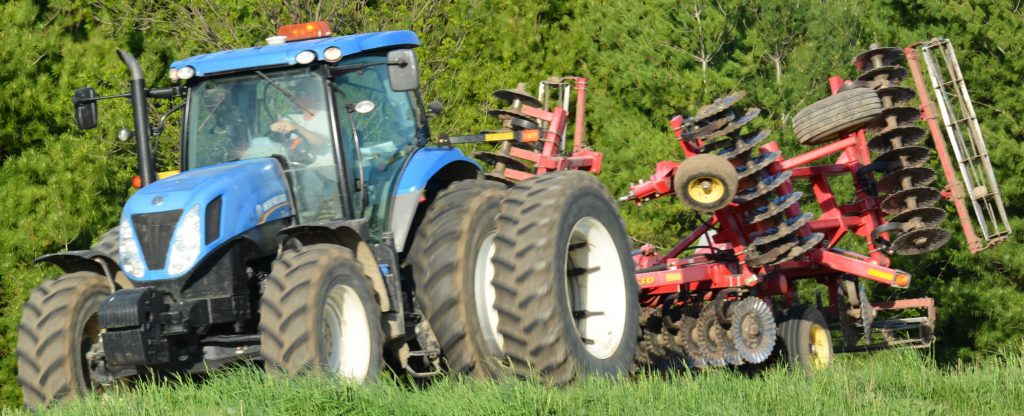
Figure 8. Example of a tillage fire break that was deployed in past wheat field fire. (OMAFRA)
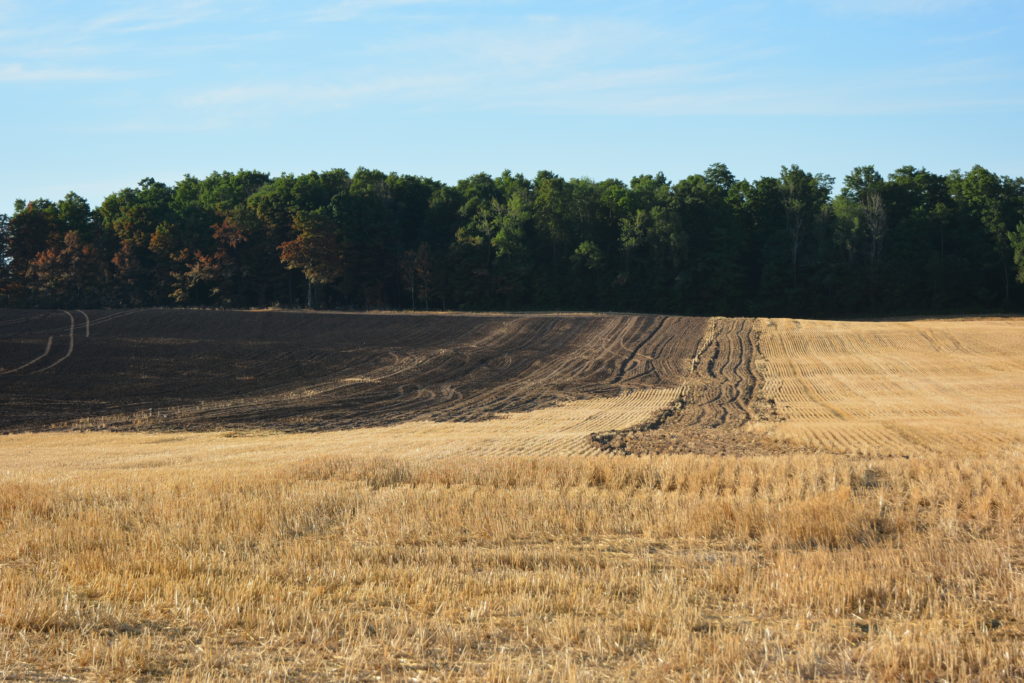
3. Response – what to do if a fire occurs
- BEFORE ANY ATTEMPT TO EXTINGUISH THE FIRE – CALL 911.
- Provide clear and concise address and/or direction to the field. (Figure 9. a and b, 10. a and b)
- Be able to supply the location of the field entrance relative to the closest marked 911 roadside address post.
- Try to have a person familiar with the fire location meet the fire service at the farm entrance, especially where the fire location can not be observed easily from the farm entrance (Figure 9a).
- Follow all directions provided by first responders.
- NOTIFY any farm staff on-site before attempting to extinguish the fire
- DO NOT PUT YOURSELF OR OTHERS AT RISK!
- Only deploy the water tank or tillage implement if you can do so safely and quickly after the fire has started.
- Remember fires spread rapidly, and can change direction quickly, particularly under windy and hot conditions, be observant of conditions and able to react quickly.
NOTE: 2020 – Rural Fire Departments have heightened concern about COVID-19. They are concerned that the virus could quarantine their entire fire hall in the event of a positive test and make emergency response delayed or unavailable for significant periods of time. They respectfully request that “social distancing” advice be respected as much as possible during an emergency call.
Figure 9 a+b. Some fields are hard to find or see from the road. Supplying the right information to assist 911 responders in finding you quickly is critical. At the 911 farm/field entrance the fire location may be hard to determine (9a). Even from the farm yard, topography and bush or other obstructions may prevent direct sight lines to the fire location (9b).
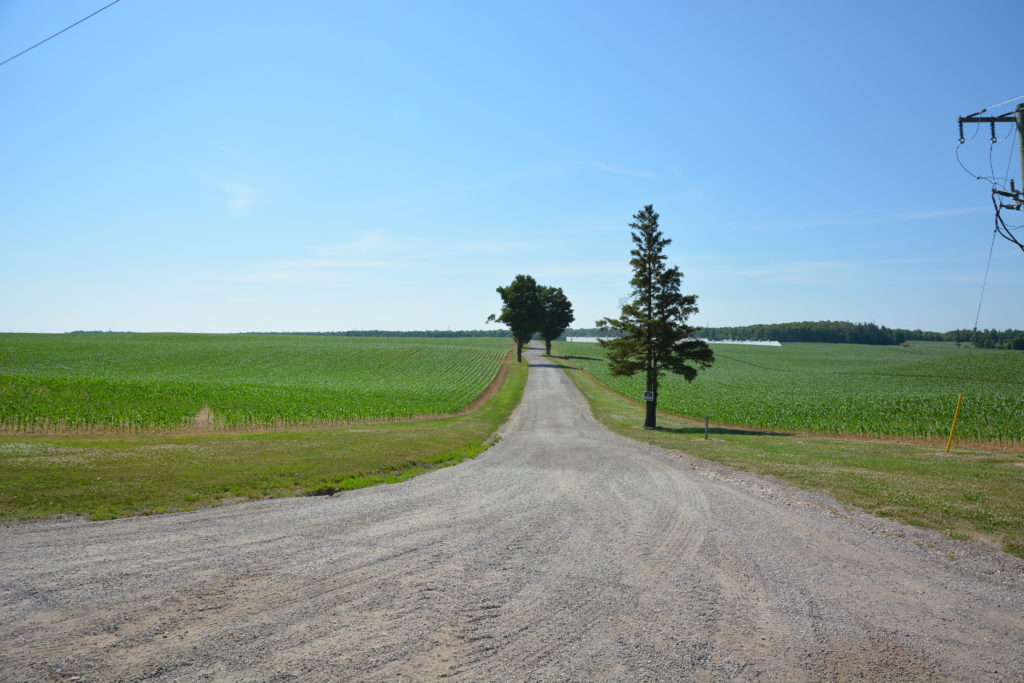
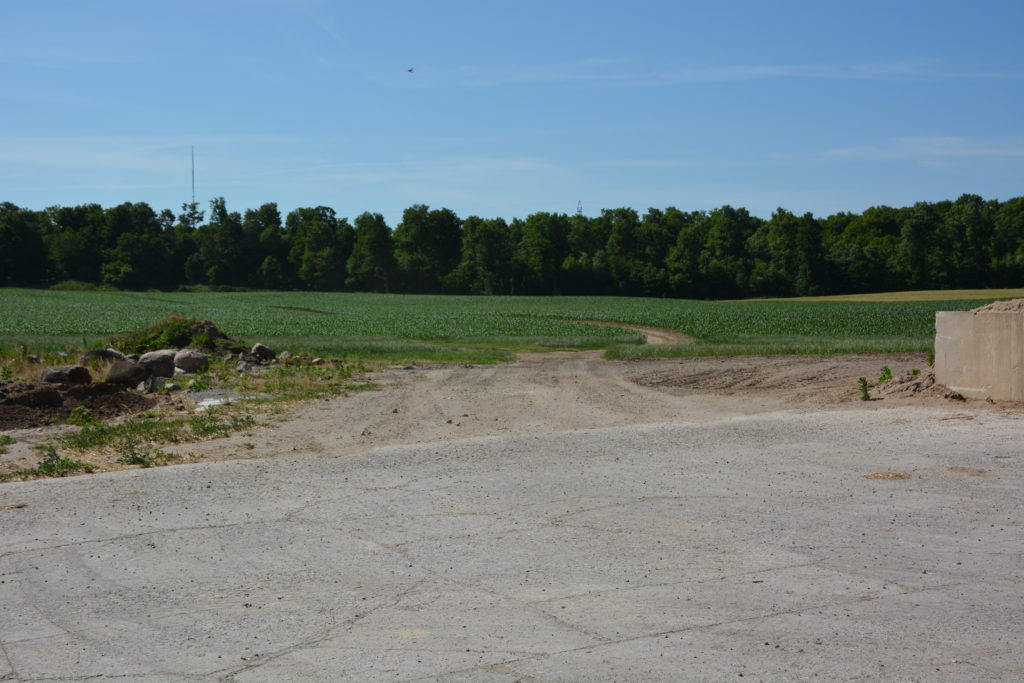
Figure 10 a+b. Providing the 911 address for entrance may not be enough for responders to find the fire quickly. If the fire location is not visible from that entry point, have someone meet the fire service at the farm entrance and/or supply GPS coordinates or clear direction on how to find the fire. In this example nearly 1500 acres is accessible only from 2 911 marked entrances. Topography and bush may block site of the fire from the road access or even the farm yard. (OMAFRA)


Preparing for a harvest fire is critical to reduce the risk of injury or death to staff and first responders. It can also avoid equipment and crop losses, which can economically cripple a farm. Consider preparing a written plan, sharing it annually with staff, and practicing it. If your team knows the safety procedures for where they are working with equipment and are aware of the potential for fire to start, they can be ready to react which will go along way to protecting people and assets.
Being prepared for equipment or field fires is just one component of a “whole farm” emergency plan. See other resources on OMAFRA’s website for building a “whole farm “emergency plan (http://www.omafra.gov.on.ca/english/engineer/barnfire/safetysketch.htm). Many excellent resources for on farm emergency planning are readily available on the internet. Review several and find what works for your operation. Taking the time the build a comprehensive Farm Safety and Emergency Response Plan is good management!